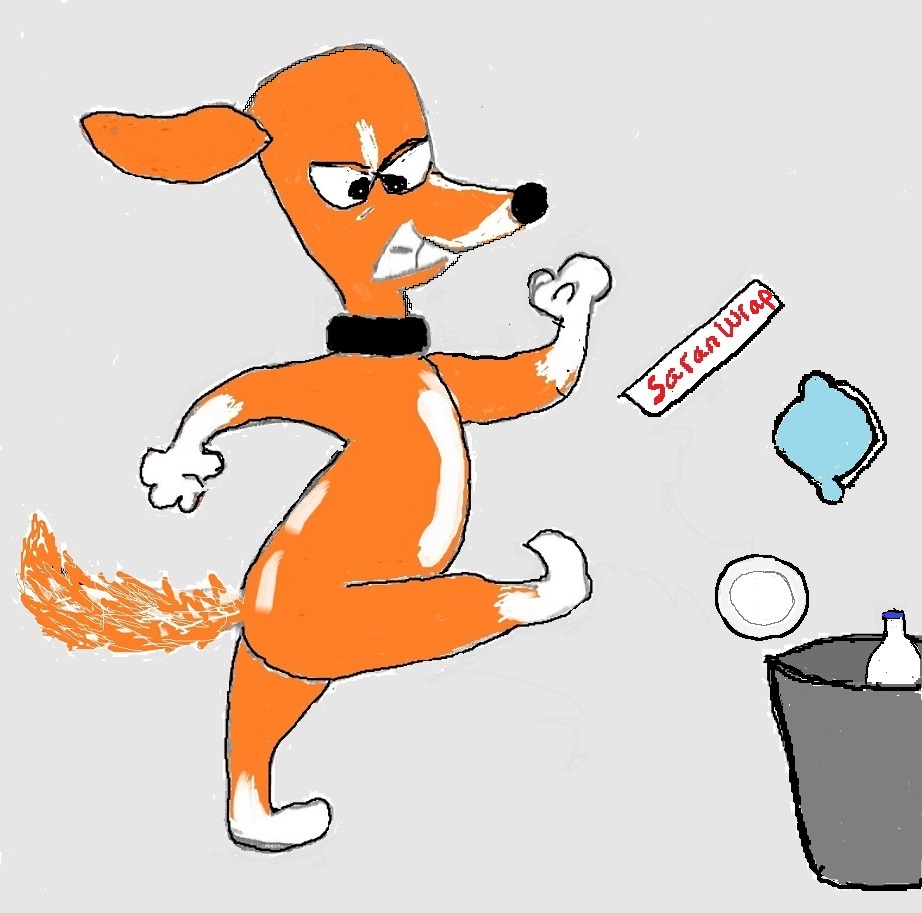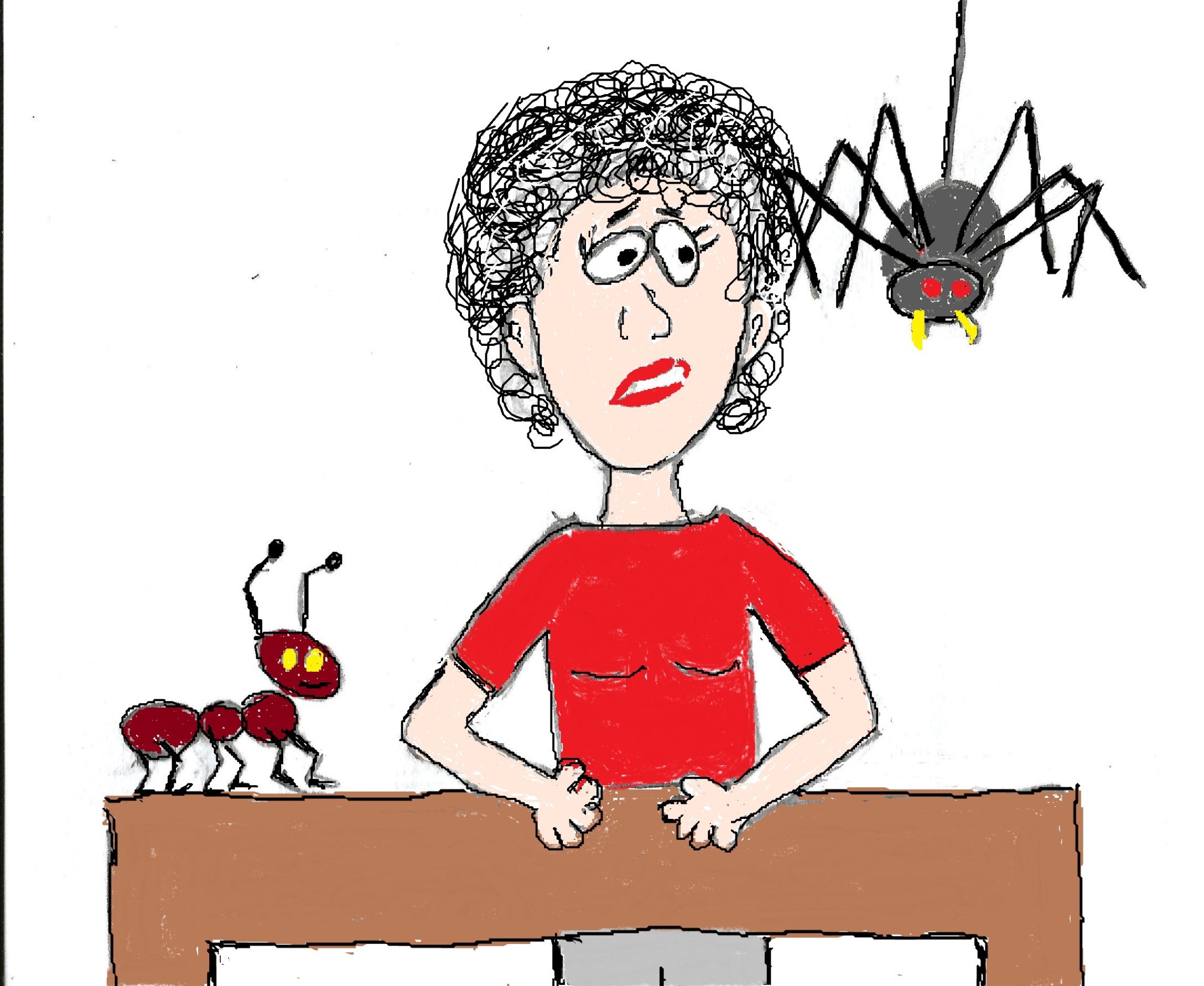- Home
- Toxic Chemicals in Household Products
- Phthalate Exposure
Phthalates Part II
30 Surprising Ways You're Exposed
Phthalates don’t show up on any ingredient lists, but they are in a lot of different products. This means you're constantly exposed to them.
You would expect to find them in plastic products. But did you know they are also in things like perfume and pesticide? Cosmetics, cleaning products and even vitamins are also sources of exposure.
In Part I of this post I cover some things you need to know about these toxic chemicals. In Part II I cover some surprising sources of phthalate exposure.
Products With Phthalate Plasticizers

About 90% of phthalates, particularly the higher molecular-weight compounds BBzP, DEHP, DiNP, and DIDP, are used as plasticizers. Plasticizers make products soft and pliable. And a shocking 10% to 60% of the weight of plastic products can be phthalates, especially DEHP.
Because they are not chemically bound to the products they’re in, they are easily released from these products. Your exposure to phthalates from plastic occurs when these semi-volatile chemicals are released into the air in your home and leach into your food and water.
Once they're in the air they may attach to dust or indoor surfaces. That means you can inhale them, absorb them through your skin and ingest them.
Many things are made of plastic. The first items in this list all include plasticizers, and usually a mixture of different kinds. Some you would expect, like vinyl flooring, which emits high levels of phthalates when it is new. Other items might surprise you.
(The types of phthalates in bold in the list below have known health effects.)
|
1. Vinyl Flooring |
DEHP is mainly used in polyvinyl products like vinyl flooring, where it is typically present at concentrations of about 20–40% of the weight. Vinyl flooring comes in two main types. The one used in homes is softer and has a higher phthalate content than the more rigid one used in commercial applications. BBP, DINP, DIDP, and DPHP are also used to make vinyl flooring. |
|
2. Plastic
Shower Curtains |
May contain 28% by weight of DEHP. May also contain DINP, DIDP, DPHP, DOTP |
|
3. Pillow and Mattress Protectors |
DEHP has been detected at 14% by weight in pillow protectors. DBP and BBP are also used to make these items. And you spend 8 hours a day sleeping on them! Breathing in the fumes and absorbing these chemicals through your skin. |
|
4. Plastic Table Clothes |
Plastic table clothes are made with several different phthalates, including DINP,
DEHP, DIDP, DPHP, DOTP |
|
5. Food Packaging |
Phthalates leach into food packaged in plastic. DEHA is the main type of phthalate found in plastic wrap and containers. But DIDP, DPHP, DINCH and DINP are also used. |
|
6. Plastic Water Bottles |
Drinking water bottled in plastic exposes you to DEP. How much depends on how long the water is stored and at what temperature. Longer storage and higher temperatures cause more leaching. |
|
7. Storage bags |
You know all those plastic bags that promise to solve all your storage problems? Well, they are made with DEHP, DINP, DIDP and DPHP. These phthalates are absorbed into the clothes and blankets stored in these bags. |
|
8. Wallpaper |
Plasticizers
are added to wallpaper to increase shelf life and printability. The soft
polyvinyl used in wallpapers contains plasticiser portions of about 30%. These
are mainly DBP, DEHP DINP, DIDP, DPHP, some BBP |
|
9. Exterior Paint |
The plasticizer BBP is added to exterior paint to make it heat/cold resistant, UV resistant and stain resistant. |
|
10. Garden Hoses |
Phthalates
leach from your hose into your water. When you water your plants they absorb
the toxins. DEHP, DINP, DIDP are used to make garden hoses. |
|
11. Vinyl Gloves |
Vinyl gloves are made with DINP and DEHP. Wearing them would be a source of skin exposure. |
|
12. Clothing |
Vinyl raincoats and boots and fake leather can emit phthalates into your air and be absorbed through your skin when you wear these items. DINP, DIDP, DPHP, DEHA, DINA, DEHP, DOTP are used to make clothing. |
|
13. Shoes |
Fake leather shoes and shoe soles may be made with DINP, DIDP, DPHP, DEHA, DINA, DEHP, DOTP. |
|
14. Purses and Luggage |
Some purses and luggage are made with DINP,
DIDP, BBP, DEHA, DINA. |
|
15. Polymer Modeling Clay |
Polymer clays are made of polyvinyl chloride (vinyl chloride is a carcinogen) mixed with several phthalates to keep them soft and workable before they are baked.They are often present as 3.5% to 14% of the total mass of the clay. Significant exposure to BBP, DBP, DEP, DEHP, DINP, DnHP and DnOP occurs when you handle the clay and inhale the fumes released during baking. |
Personal Care Products and Cosmetics
Phthalates are also used as solvents and to increase spreadability and enhance absorption in personal care products. When you use these products, phthalates can be absorbed into your skin. Other chemicals in these products can increase absorption.
When applied to your skin, phthalates like DEP rapidly penetrates it and becomes widely distributed around your body following each exposure. You can also inhale them as they evaporate from the product, especially from spray products and nail polish.
|
16. Soaps |
Several different phthalates have been reported in cosmetics and other personal care products, sometimes at concentrations > 1% of total weight. Commonly used types include BBP, DBP, DEP, DnBP, DiBP. |
Fragranced Products
Some of the highest levels of phthalates in indoor air come from scented products. They are used in these products to stabilize the fragrance.
You can assume that if the products you use smell good, they emit phthalates with that smell. DEP is commonly found in scented products.
|
23. Air Fresheners 24. Cleaning Products 25. Laundry Detergent 26. Fabric Softener 27. Candles |
The highest DEP concentrations are found in fragrance/perfume and air fresheners. |
|
28. Perfume |
Studies have found women who use cologne or perfume have higher levels of DEP in their bodies. Nine different phthalates may be found in perfume - BBP, DBP, DEP, DEHP, DiBP, DIDP, DMP, and DOP. |
Products With Inactive Ingredients
Inactive or inert ingredients are added to products for many reasons. For example, they can act as solvents, surfactants or preservatives.
But don't let the term inert fool you. It doesn't mean these ingredients are safe. They may be biologically or chemically active and in some cases may be more dangerous to your health than active ingredients. And several types of phthalates are used as inert ingredients,
|
29. Pesticides |
Pesticide ingredients are divided into two categories: active and inert. Inert ingredients aren't listed on the label. But it is very possible that some of the inert ingredients are phthalates like DBP and DMP. |
|
30. Vitamins and Supplements |
Several different phthalates are used in vitamins and supplements, including DEP, DBP, DMP, and DOP. The amounts used aren't regulated. They are used to prevent the breakdown of enzymes, acid reducers, and probiotics by stomach acid; reduce stomach upset from iron and laxatives; minimize the aftertaste from fish oil and garlic; and produce soft gelatin capsules, “softgels” that are easier to swallow or contain oils like fish oil. |

4 Ways To Reduce Your Phthalate Exposure
Unfortunately, you can’t completely avoid all phthalate exposure. There are sources of exposure that aren’t on this list. And there are things on this list that don’t have phthalate free alternatives.
For example, while I found phthalate free rain gear for kids, I didn’t find any for adults.
I also don’t know of any safer options for vitamins and minerals. However, if you make the changes listed below you will significantly reduce your exposure to these toxic chemicals.
1. Go Plastic Free
Since plastic products typically have the highest concentrations of any phthalate and easily leach from plastics, they are a good place to start reducing exposure.
The goal here is to get as much plastic out of your life as you can.
- Don’t install
vinyl flooring in your home. It may be cheap but it's costly to your health.
Instead, consider installing ceramic tile or Marmoleum Flooring - Find substitutes made of nontoxic materials
Cotton or Wool pillow and mattress protectors
Cloth shower curtains and tablecloths
Rubber garden hoses
Stainless steel and glass for food and water storage
Use plastic-free food storage items
- Instead of wallpaper, paint your walls with a zero VOC interior paint like Ecos
- Eat more whole foods – it has less plastic packaging
One study found that after three days of eating food with limited food packaging DEHP levels in study participants was reduced 53–56%.
2. Go Phthalate Free
This is an easy step you can take to reduce your exposure to these toxic chemicals. For many of the products listed in this post there are phthalate free options, especially personal care products.
For example, according to the Campaign for Safe Cosmetics AVON, ESTEE LAUDER, Johnson & Johnson, L'OREAL, REVLON and Unilever have all stopped using phthalates in their products. They also have links to MADE SAFE CERTIFIED products that you can explore.
Also, read the labels of the products you buy. And make this practice a habit. Here are some examples of phthalate free products.
3. Go Fragrance Free
Scented products, especially air fresheners, are a major source of phthalate exposure. Fortunately, there’s a simple solution. Go fragrance free!
Read labels and avoid cleaning and laundry products (and personal care products) that include fragrance. And Use nontoxic options to freshen your homes air.
Check out these articles for inspiration. How Many Chemicals Does It Take To Make An Ocean Breeze and Why Fabric Softener is Unhealthy and Unnecessary.
4. Go Pesticide Free
I am always looking for ways to convince people to go pesticide free. And phthalate exposure is definitely a good addition to my arsenal of reasons.
There are plenty of less toxic ways to control pests. Wondercide is an all purpose natural insecticide that's effective on both indoor and outdoor pests. Diatomaceous earth is a safe way to control insects like fleas and ants.
For more info check out Got Bugs? Try These 3 Simple, Safe Solutions and Nontoxic Flea Control.
You can't eliminate all phthalate exposure. But you can reduce your exposure by avoiding the main sources of your exposure.
Avoiding foods packaged and stored in plastics, personal care products with phthalates, things made with polyvinyl, scented products and pesticides, will help protect your health from these endocrine disrupting, inflammatory toxins .










